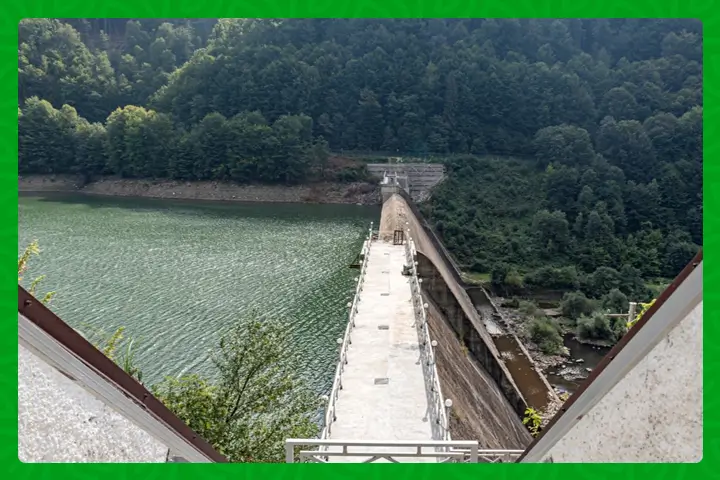
Despite being blessed with abundant water resources, Rwanda has long grappled with a critical issue – the lack of adequate water storage capacity. This vulnerability to erratic weather patterns has had a profound impact on the country’s predominantly rain-fed subsistence agriculture, making farmers susceptible to both droughts and floods. According to a recent report from the Rwanda Water Resources Board, these limitations have been costing the nation up to a third of its potential economic growth. However, a glimmer of hope shines on the horizon, with six ambitious dam projects set to transform Rwanda’s water landscape. In this article, we will delve into the details of these transformative initiatives and explore how they promise to revolutionize irrigation, drinking water supply, and electricity generation, all while safeguarding the nation against climate quirks.
1. Bakokwe Dam: Situated 16 meters high, the Bakokwe Dam emerges as a beacon of progress. This colossal structure is classified as a large dam by the International Commission on Large Dams, serving as a testament to Rwanda’s commitment to water management. It is poised to implement the Kagaga water supply system, aiming to provide clean water access to sectors in Muhanga, Kamonyi, and Ruhango districts. Covering an expansive area of 594.5 square kilometers, it stands as a lifeline for approximately 394,639 people, with the potential to change lives through a comprehensive water treatment system, storage tanks, and a robust distribution network.
2. Warufu Dam: In Gatsibo District, the Warufu Dam takes center stage, promising to irrigate 2,500 hectares and supply clean water to Nyagahanga, Ngarama, and Gatsibo sectors. Beyond its immediate impact, this project brings the possibility of fisheries development, increasing food security and bolstering incomes for local communities. With a towering height of 19.9 meters, it signifies Rwanda’s ambition to transcend its water management challenges.
3. Rusizi III Dam: Rusizi III, a 147MW hydropower project, stands as a beacon of regional collaboration. Spanning the borders of the DR Congo, Burundi, and Rwanda, this run-of-river dam and power distribution station represent a groundbreaking venture in sub-Saharan Africa. With support from the World Bank, EU, and AfDB, among others, an investment capital of $450 million will bring this project to fruition by 2024. Not only will it double Burundi’s power capacity and boost Rwanda’s by half, but it will also reduce dependence on wood fuel and charcoal, safeguarding precious forests and biodiversity.
4. Akanyaru Multipurpose Dam: Straddling the border between Rwanda’s Southern Province and Burundi’s Ngozi Province, the Akanyaru Multipurpose Dam is a beacon of shared benefits. Designed for power generation, water supply, and irrigation, it is part of the Nile Basin Initiative, aiming to benefit both nations. With a staggering height of 52 meters and a water storage capacity of 333 million cubic meters, it will power 141,111 households, support 24,948 farmers, and provide food for approximately 124,740 people, while also ensuring clean water access for 614,200 people and the restoration of degraded watersheds upstream.
5. Muvumba Multipurpose Dam: Financed by the African Development Bank, the Muvumba Multipurpose Dam is poised to secure stable water resources for agricultural, hydropower, and domestic water supply in Nyagatare District. This ambitious project will serve Nyagatare, Karangazi, and Rwimiyaga sectors, offering water for irrigation and livestock in multiple areas. With a towering height of 39 meters and a gross storage capacity of 54.77 million cubic meters, it will transform an estimated 8,820 hectares of land into fertile ground for prosperity.
6. Nyabarongo II Multipurpose Dam: In the heart of Rwanda, the Nyabarongo II Multipurpose Dam is poised to change the landscape forever. Rising 59 meters high and spanning 363 meters long, it will create a vast reservoir with a storage capacity of 803,000,000 cubic meters. This monumental reservoir will provide irrigation for 20,000 hectares of land, ushering in a new era of agricultural abundance. Additionally, it will house the Nyabarongo II Hydroelectric Power Station, generating 43.5 megawatts of clean, sustainable energy for the nation.
In conclusion, these six ambitious dam projects are not merely infrastructural developments; they are symbols of Rwanda’s determination to overcome climate quirks and usher in a new era of prosperity. With their potential to revolutionize irrigation, drinking water supply, and electricity generation, they are poised to drive economic growth and ensure a sustainable future for the nation. As these projects progress, Rwanda is on the cusp of a water revolution that will reshape its destiny and offer a shining example to the world.
Stay updated with the latest farming tips and agriculture industry news from Africa by subscribing to our newsletter. Don’t miss out on valuable insights and updates. Follow us on Twitter, LinkedIn, and Facebook to join our farming community and stay connected with us.



















